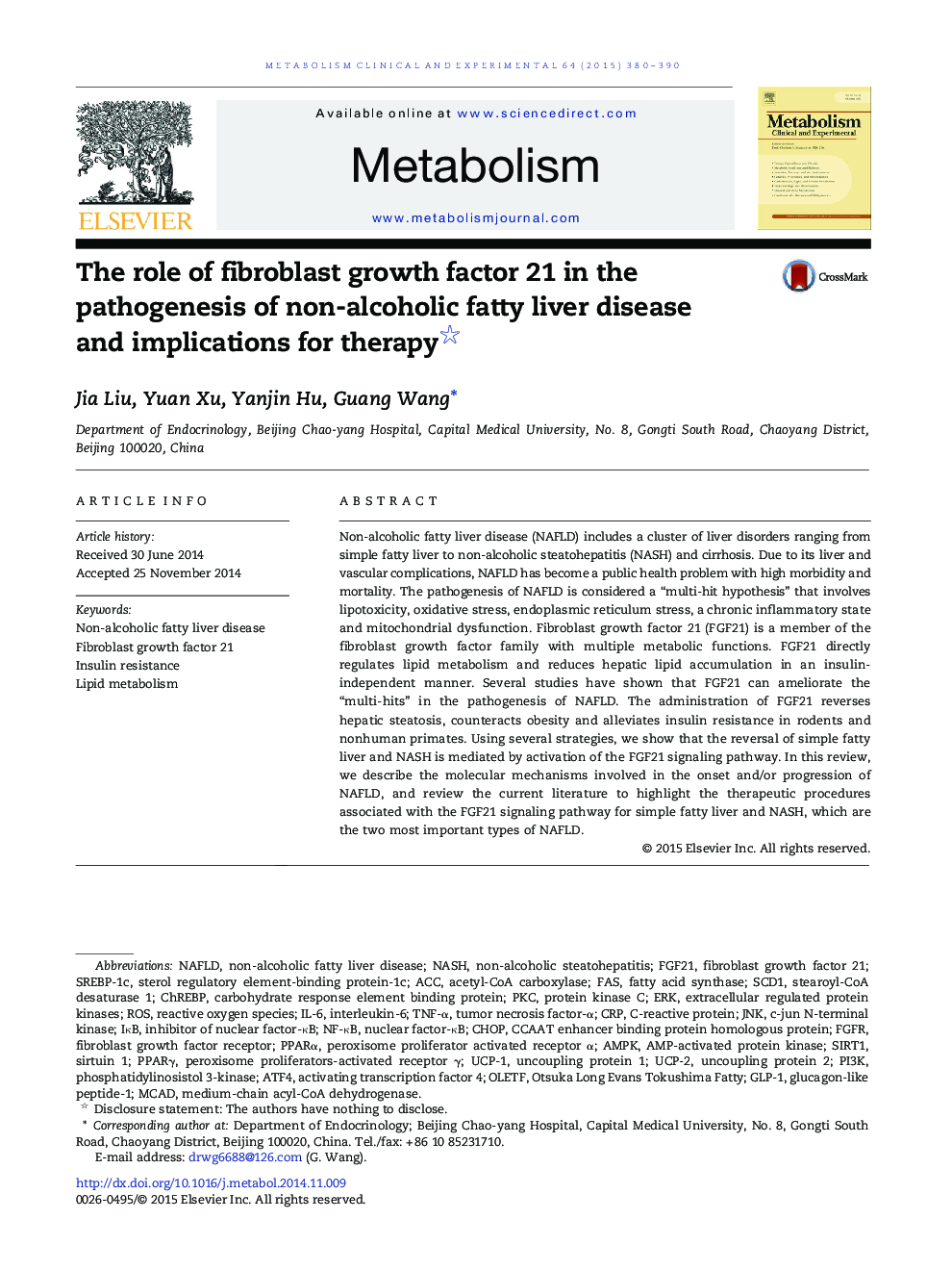| کد مقاله | کد نشریه | سال انتشار | مقاله انگلیسی | نسخه تمام متن |
|---|---|---|---|---|
| 2805717 | 1157073 | 2015 | 11 صفحه PDF | دانلود رایگان |
Non-alcoholic fatty liver disease (NAFLD) includes a cluster of liver disorders ranging from simple fatty liver to non-alcoholic steatohepatitis (NASH) and cirrhosis. Due to its liver and vascular complications, NAFLD has become a public health problem with high morbidity and mortality. The pathogenesis of NAFLD is considered a “multi-hit hypothesis” that involves lipotoxicity, oxidative stress, endoplasmic reticulum stress, a chronic inflammatory state and mitochondrial dysfunction. Fibroblast growth factor 21 (FGF21) is a member of the fibroblast growth factor family with multiple metabolic functions. FGF21 directly regulates lipid metabolism and reduces hepatic lipid accumulation in an insulin-independent manner. Several studies have shown that FGF21 can ameliorate the “multi-hits” in the pathogenesis of NAFLD. The administration of FGF21 reverses hepatic steatosis, counteracts obesity and alleviates insulin resistance in rodents and nonhuman primates. Using several strategies, we show that the reversal of simple fatty liver and NASH is mediated by activation of the FGF21 signaling pathway. In this review, we describe the molecular mechanisms involved in the onset and/or progression of NAFLD, and review the current literature to highlight the therapeutic procedures associated with the FGF21 signaling pathway for simple fatty liver and NASH, which are the two most important types of NAFLD.
Journal: Metabolism - Volume 64, Issue 3, March 2015, Pages 380–390
